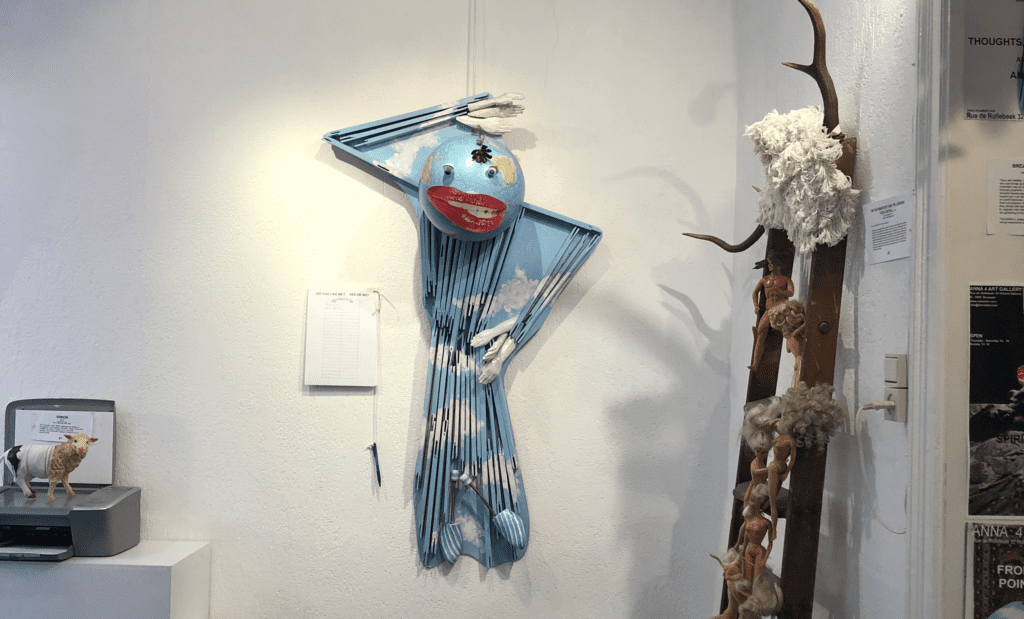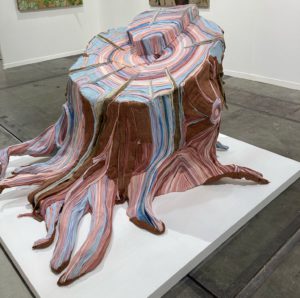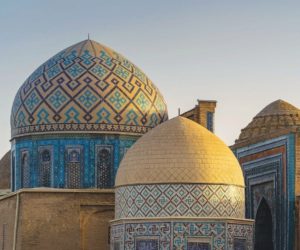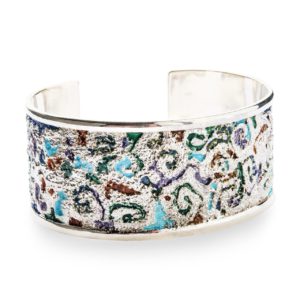Assemblage Art: a little find of contemporary art gallery in Sablon
Anna Agtma’s art gallery is a journey as the artist makes you open your mouth laughing and then slips the truth in.
Assemblage art and political commentary all mixed into one spectacle for the eyes, mind and heart
When you walk down Sablon the lively chatter and usual hustle and bustle of Brussels tends to ravel you fully. But if you take a moment to glance in the glass windows of the art galleries you might be surprised. I had to do a double take when I walked past Anna Agtma’s gallery, but I didn’t have to think twice before entering. I was drawn to the pieces first by curiosity and then by a sense of real connection. These pieces seem to speak to you in a familiarity of an actor that winks at an audience. They don’t look down at you and they don’t make you search your memory for references. You immediately feel complicity.
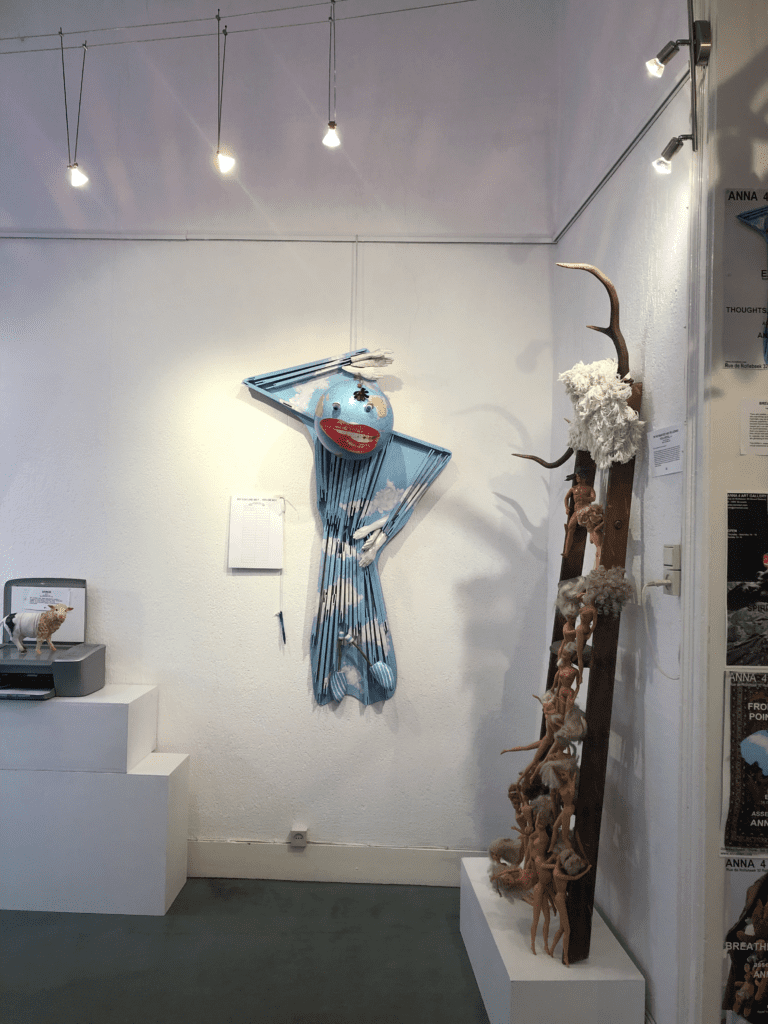
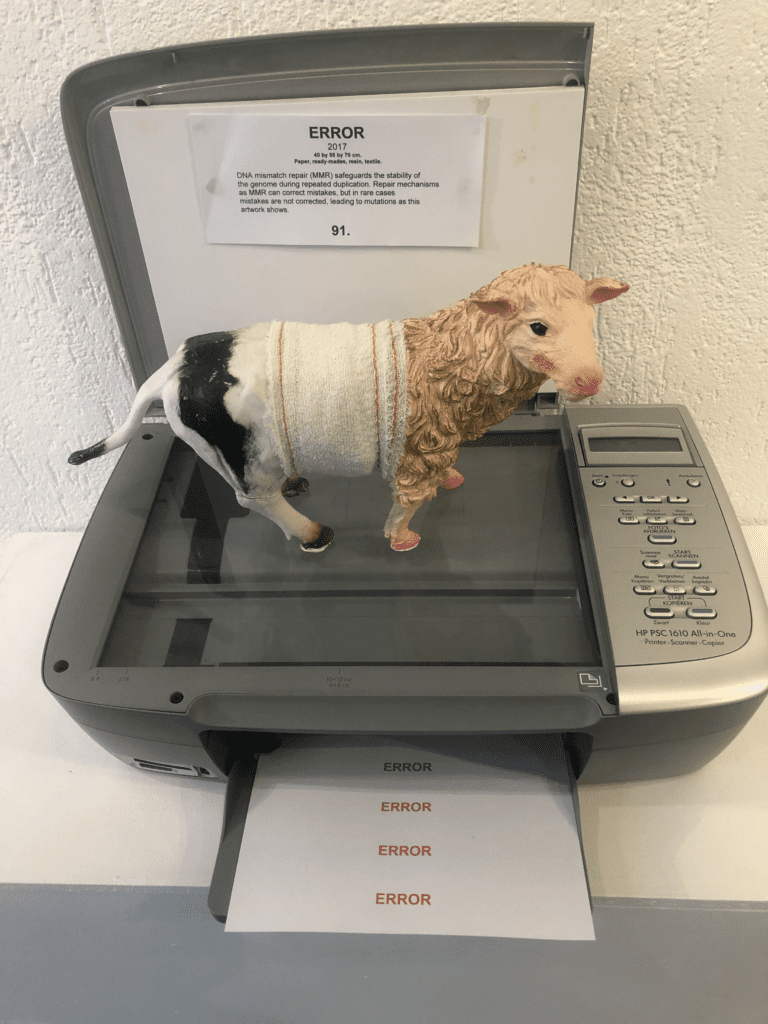
They click. Barbies climbing up on a wooden staircase trying to reach a dream. The seven dwarfs of snow white and the sleeping beautiful body waiting to be taken by the prince. These are all uncannily familiar, they ring a bell but there is also a dark side lurking behind each piece. It is the brutal reality of what these familiar mediatic and historical events hide: the truth. The difficult truth behind fairy stories and legends is that most are based on traumatic events: Hansel and Gretel are two orphans lost in the woods searching for food, Red Riding Hood is a poor girl deceived by a wolf and taken by him.
Much like fairies hide dangerous and difficult realities that need to be processed and talked about, much of the media also hides cruel realities. The materialistic competition of young girls chasing dreams fabricated by the fashion industry.
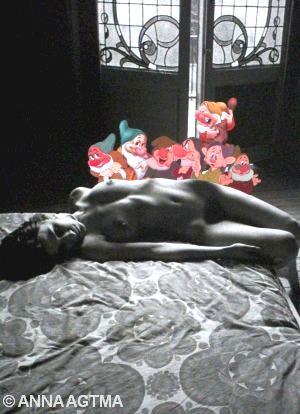
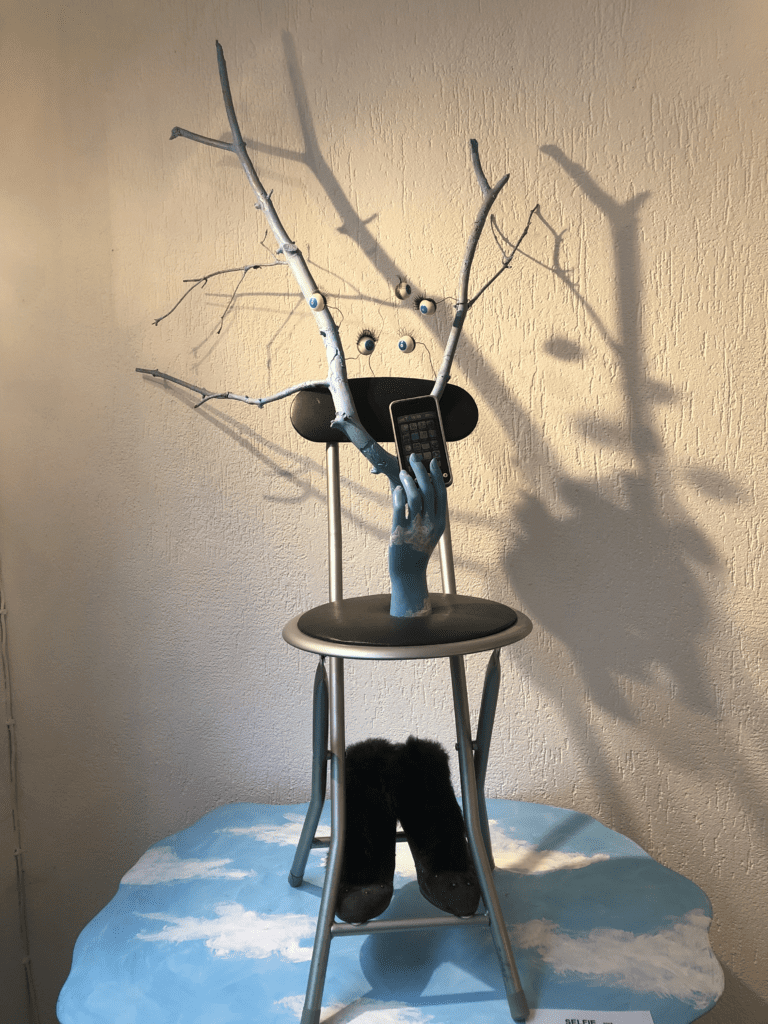
I turn around and see a piece in fragments, a hand and eyes made of wooden branches glued to a chair. In the center a phone. These fragments make up the piece entitled “selfie” and I immediately want to giggle because I recognise what it is saying. It’s a playful representation of our obsession with selfies and the selective way we show ourselves in “instagramable” pieces. This piece too takes me by surprise.
Behind it I see a robot figure covered in roses with wide open eyes and holding cleaning gloves immediately recognisable as your everyday housewife. She crosses her fingers perhaps still hoping for that rose garden that as the title says “I never promised you”.
The pieces are brutally honest and their simplicity spells genius. They are clear in their play and communicate a reflection of society’s injustices in a universal language. The references are mostly Western yes but the issues that they address concern us universally: feminism, despotism, mediatic propaganda and the risks of technology. The lies we are told and the fantasies we follow. You would expect these criticisms of society, these wakeup calls to be quite harsh.
The pieces are a mix from different exhibitions. They are all criticism of society, but I wrap it in humour. You know so it doesn’t hurt too much. It’s actuality. The news. The only thing of course is when it’s no longer actual it goes into my cellar
Anna Agtma
Talking about politics and injustice can be heavy and burdening. But Anna Agtma’s pieces make you laugh. They are light, playful and achieve perhaps because of that, a much deeper blow. Agtma’s pieces have an entire journey in them: first they draw you in with their colourful, intricate and ingenious make. Then you recognise them and feel surprised. They make you laugh and you open up. And that’s where the truth comes in.
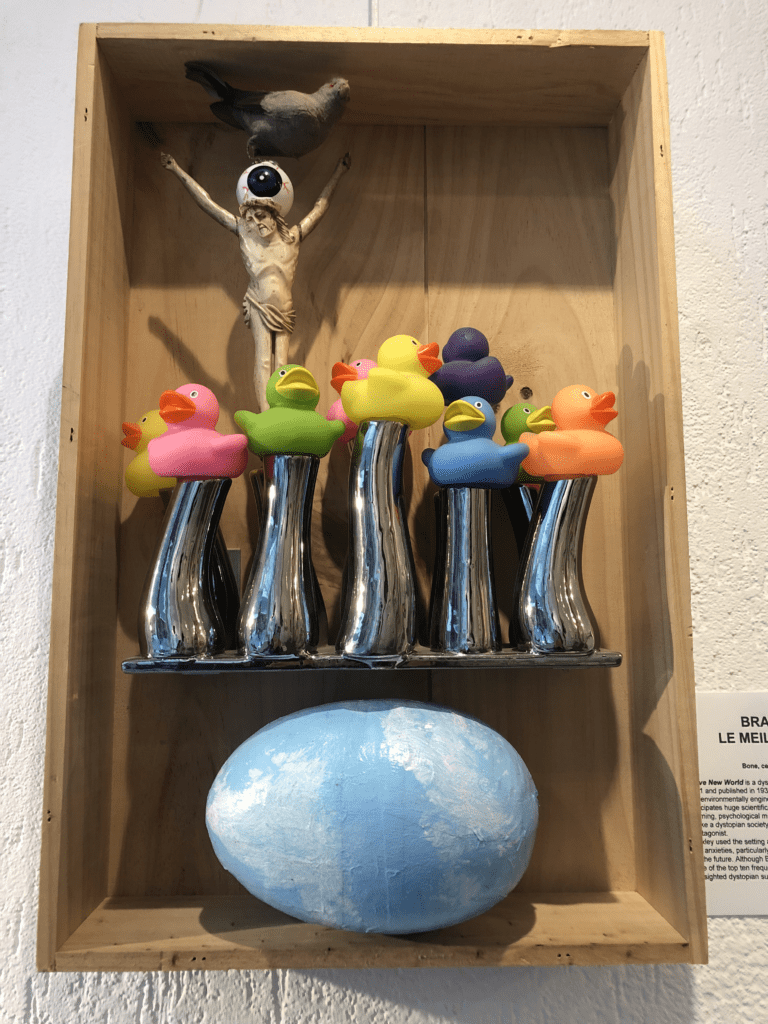
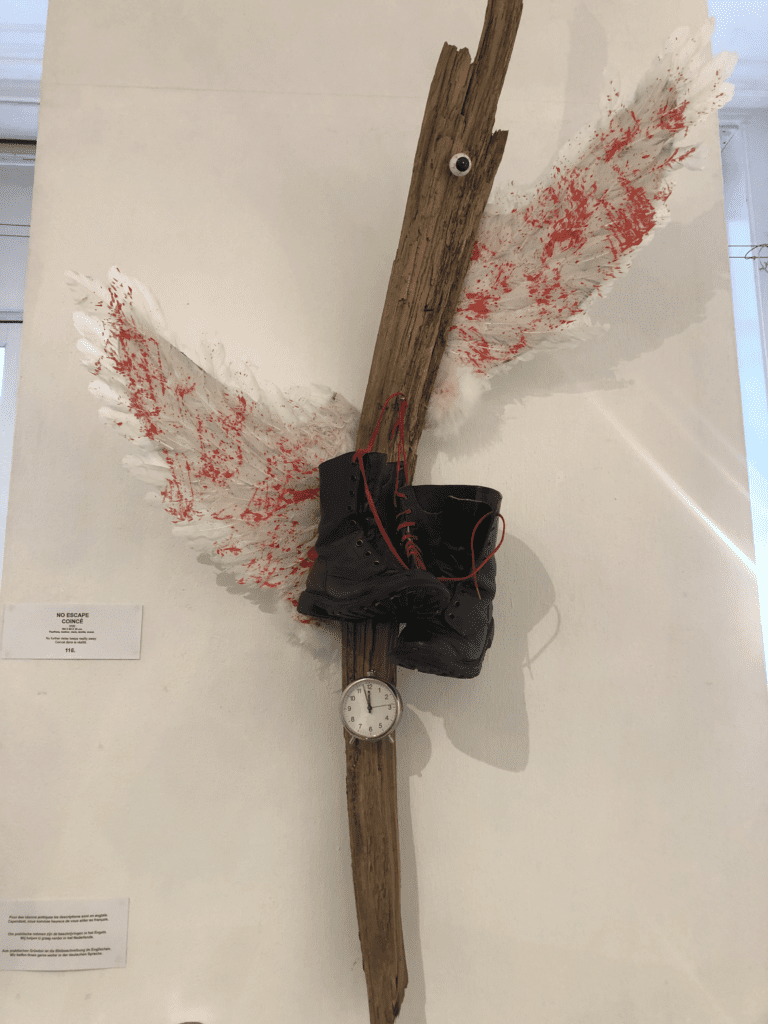
The artist herself sits in the gallery and welcomes visitors. She lip reads and speaks several languages. We speak for a moment about the pieces “The pieces are a mix from different exhibitions. They are all criticism of society, but I wrap it in humour. You know so it doesn’t hurt too much. It’s actuality. The news. The only thing of course is when it’s no longer actual it goes into my cellar.” I ask where she is from, she tells me Holland and we speak a little about Brussels and languages.
She is very patient and meets me in every language as I stumble and search for which words to express myself best: German or English or French? She says “Brussels is so funny with languages. I put everything in English and there are visitors sometimes upset that it’s not in French. Then there is a third part in Belgium of German speakers.Well the website of the city hall of Brussels is mainly in English. Of course in the other languages too but mainly english. So I chose English for the gallery.”
For me the artist’s pieces speak in a language that we can understand at least we Europeans, so I find no difficulty to enjoy the exhibition. They speak in the language of comedy and truth. They do the hard work of serious play. And in their simplicity they reveal the essentially human and all our common struggles behind society’s injustices.
The gallery is open Thurs – Sat 14 – 18 Sun 12 – 16 and is located at RUE DE ROLLEBEEK 32 ROLLEBEEKSTRAAT, GRAND SABLON-GROTE ZAVEL, B – 1000 BRUSSELS.
